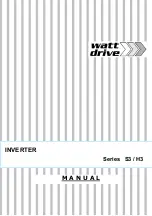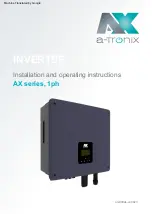
Operating the Equipment Locally: Audio Menu – Dolby (AC-3) Pass-thru, Dolby E Pass-thru and DTS Pass-thru
Page 4-80
Reference Guide: Voyager E5784 and E5788 HD DSNG Encoder
ST.RE.E10137.3
Lip Sync Offset Option
This option is only available if the Auto Lip Sync option is set to On. It
allows a fixed delay to be applied to the audio in addition to the auto lip
sync delay.
Table 4.80: Lip Sync Offset Options
Valid Input Range
Description
Min: -50
Max: 50
Lip Sync Offset in milliseconds.
Audio Delay Option
This option is only available if the Auto Lip Sync option is set to Off. It sets
the delay that should be applied to the audio.
Table 4.81: Audio Delay Options
Valid Input Range
Description
Min: 111
Max: 3540
Audio Delay in milliseconds.
Actual Audio Delay
Shows the actual audio delay. It is for status only and cannot be changed.
Language Option
This enables the language of the audio channel to be set.
SMPTE 302M Standard Option
This option is only available if the coding standard is Dolby E Pass-thru.
SMPTE 302M defines the mapping of AES3 data into an MPEG-2 transport
stream. Problems may be experienced with some Receivers if the Encoder
and Receiver are not using the same version of SMPTE 302M. This option
allows the Encoder to be configured to work in either the 1998 or the 2000
version of SMPTE 302M.
Table 4.82: SMPTE 302M Standard Options
Selected Option
Description
1998 Standard
Refers to the 1998 SMPTE 302M standard.
2000 Standard
Refers to the 2000 SMPTE 302M standard.
Channel Option
This option is only available if the coding standard is Dolby E Pass-thru. It
controls the value written to the channel identification field in the
(SMPTE 302M) AES3 data elementary stream header.
















































